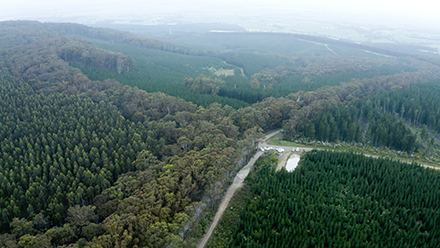In November 2021 former Australian Forest Products Association CEO Ross Hampton wrote that what was then the latest five yearly review by ABARES of Australia’s national plantation estate was more than sobering reading.
It was, Mr Hampton said, like the script of a horror film.
“The bureaucratic speak in the report, notes unemotionally that Australia’s softwood plantation estate (the pine trees that we use to make our timber house frames) remains ‘stable’,” he wrote.
“‘Stable’, in this context, means stagnant,” he wrote. “This line should be written in bold with lots of exclamation marks.”
Well, welcome to his Horror Movie Part 2.
So, where are we now?
Australia’s plantation estate is still on a worrying downward trajectory.
There was a small increase in new plantations of 2300 hectares (hardwood, 1181 ha and softwood 1119 ha) but these new plantings will simply not be enough to meet future demand.
Australia’s national plantation estate has fallen by more than 250,000 hectares from 1.973 million hectares in 2014-15 to 1.716 million hectares in 2021-22.
As Acting Chief Executive Officer of the Australian Forest Product Association Natasa Sikman pointed out, the decline is extremely concerning and is a reminder that collectively, industry, federal and state governments and other decision and policy makers need to work together to get more timber trees planted for the future.
Australia is currently importing more than $6 billion worth of wood products, and we already rely on imports for up to 25% of the timber needed to build our houses.
Sadly, given what Mr Hampton wrote some two years ago was correct; it is a horror movie, and it’s not getting a lot better.






